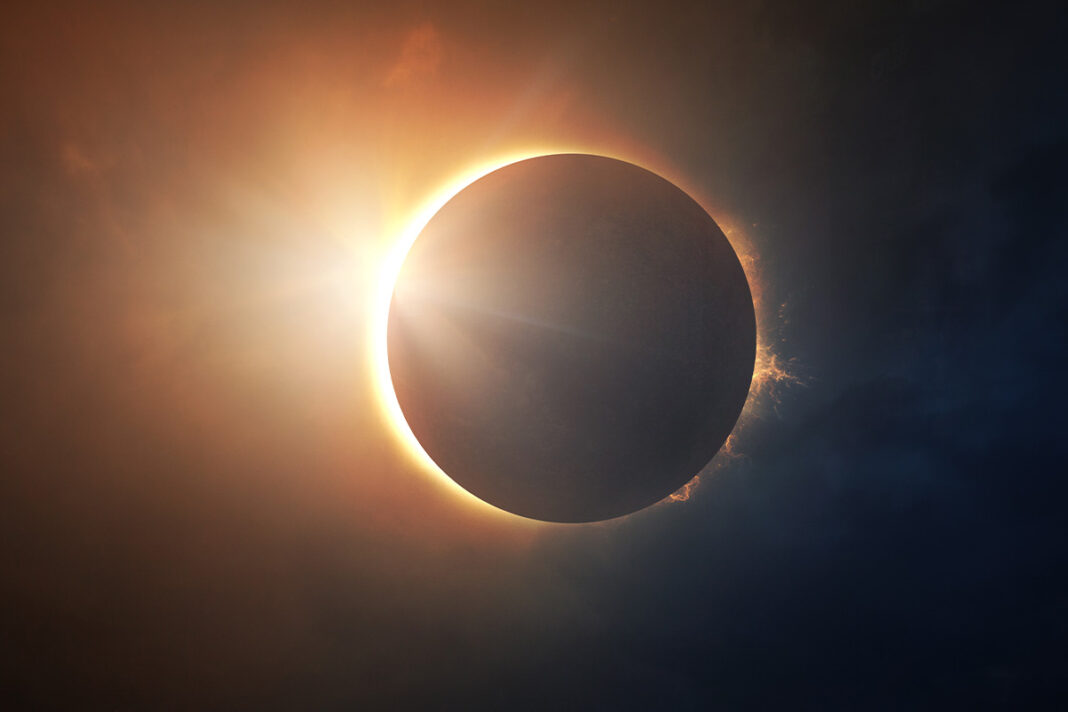NORTH AMERICA—There is quite a bit of excitement surrounding the upcoming solar eclipse. On April 8, at around 2:05 pm, the moon’s shadow will begin sailing across North America as millions of people will view the total eclipse of our nearest star. This event will coincide with the cycle 25 solar maximum. The solar maximum, generally speaking, runs in a cycle of 11 years. And while it is predicted that this cycle peak will occur in July of this year, in this week’s eclipse, streamers should be visible throughout the corona as the magnetic field is impacted by the solar maximum.
“In 2017, the sun was nearing solar minimum. Viewers of the total eclipse could see the breathtaking corona, but since the sun was quiet, streamers flowing into the solar atmosphere were restricted to just the equatorial regions of the star,” reported NASA.
The eclipse is expected to be visible from Mexico to Canada. The path of totality, where observers witness a total solar eclipse, is wider this time around compared to 2017. This is because the moon is closer to Earth in its orbit, allowing more people to witness the sun’s corona. NASA has even mentioned the possibility of observing a coronal mass ejection (CME) during the eclipse. A CME involves the significant release of magnetic field and plasma mass from the sun’s corona into the heliosphere. While CMEs are commonly associated with solar flares and other solar activities, a universally accepted theoretical understanding of these relationships is yet to be established. During periods near solar maxima, the sun generates approximately three CMEs daily, whereas during solar minima, this frequency decreases to about one CME every five days. CMEs often exhibit a distinct appearance resembling a large, twisted rope, known to scientists as “flux rope.”
While the eclipse itself poses no threat to life on Earth, warnings abound, including school closures and stocking up on food and other necessities. The Niagara region in southern Ontario has issued a state of emergency as it expects an influx of a million visitors to view the eclipse. This could put pressure on infrastructure where prime viewing of the eclipse is expected.
Here on Manitoulin Island, we are only expected to see a partial eclipse. During a partial or total solar eclipse, like the one occurring on April 8, it is unsafe to gaze directly at the sun except for the brief total phase (“totality”). During totality, the moon completely obscures the sun’s bright face, but this occurs only within the narrow path of totality. You should not use adjustable and/or auto-darkening welding helmets or similar products to view the sun. Many don’t go as dark as shade 13 or 14, and even those that do post a grave risk to your eyesight, either because you accidentally adjust them to an unsafe setting or because they don’t auto-darken fast enough when you look at the sun with them.
The safest method for viewing the uneclipsed or partially eclipsed sun is through specialized solar filters, such as “eclipse glasses” or handheld solar viewers. Ordinary sunglasses, regardless of how dark they are, do not provide adequate protection as they allow too much sunlight to pass through.
An alternative safe viewing method for observing the partially eclipsed sun is through indirect means, such as pinhole projection. For instance, creating a waffle pattern by crossing the outstretched, slightly open fingers of one hand over the other hand’s fingers and observing the shadow on the ground will project a grid of small images showing the sun as a crescent during partial phases of a solar eclipse. Similarly, the shadow of a leafy tree during a partial eclipse will display crescent-shaped suns on the ground. Items like a colander, straw hat, or perforated spoon can also serve as effective pinhole projectors, but direct viewing through the pinholes should be avoided.
Welding filters with a shade number of 12 or higher are suitable for safe viewing, with shades 13 or 14 offering optimal brightness and color. However, these filters may not be readily available in stores and might need to be purchased online.
When photographing the eclipse with a phone, it’s crucial to use a solar filter designed for such purposes, covering the lens entirely and remaining in place throughout the entire viewing session. While capturing the eclipse on a cellphone screen won’t harm the eyes, some models may struggle to display the sun effectively due to its small size. Still images are preferable for photography, as they require less exposure time, although using a tripod or stabilizing the phone against a steady surface is recommended for video recording to avoid jittery footage.
Remember, it’s never safe to look directly at the sun during an eclipse without proper eyewear protection, as solar radiation can cause damage to the retina, as stated by NASA.





